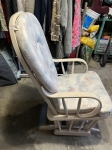Please do keep wearing masks when inside most anywhere
The thing to remember about the high levels of air turnover and filtration in airplanes is that the systems are typicially on when the plane is in the air. Not necessarily during boarding, the wait to take off, the wait for a gate, or deplaning. https://yourlocalepidemiologist.substack.com/p/sars-cov-2-transmission-on-planes
Put Your Face in Airplane Mode
Masking only at the start and end of every flight will do a lot to keep you safe.
(The Atlantic)
Here’s the cheat code: Instead of masking up for your whole flight, just cover up at the start and end of it. Those crucial few minutes—first when you’re boarding the plane, and then after you’ve landed—account for only a sliver of your travel time, but they are by far the riskiest for breathing in viral particles.
...
A commercial flight might seem like the scariest possible setup for super-spreading COVID: Hundreds of strangers who have been God-knows-where over the past few days cram into a metal tube for hours on end. In such quarters, and given current infection rates, you’re very likely to have at least one sick person on board
....
But your chances of getting sick don’t stay the same during the course of the flight, Joseph Allen, a Harvard public-health professor who studies ventilation, told me. When the plane is at cruising altitude, the risk will be at its lowest.
That’s because planes are equipped with virus-zapping ventilation systems that put schools, restaurants, and other places to shame. About half of the stale, germ-laden air gets flushed out of the plane as the engines suck in more air from outside, and the other half gets recycled through HEPA filters. No other indoor spot that people typically frequent rivals that level of ventilation: In a home, the air gets refreshed every three hours. In a bank, it’s every 45 minutes. In a hospital operating room, it’s at least every five minutes. On airplanes, that cycle takes as little as two minutes.
But these primo ventilation systems aren’t always on, and they’re not always operating at full blast. To cut down on fuel costs and exhaust emissions—at least before the pandemic—pilots often shut off the ventilation system while planes are at the gate, Dan Freeman, a safety-management systems expert at Boeing, told me.
(I just noticed that this post is 12 months to the day since the last post in this thread)
It’s rare seeing folks with masks on anymore. I was on a plane last week; no one wore a mask. Passengers or crew.
CharlesG said:
It’s rare seeing folks with masks on anymore. I was on a plane last week; no one wore a mask. Passengers or crew.
aka, "If I pretend it doesn't exist it can't hurt me"
max_weisenfeld said:
CharlesG said:
It’s rare seeing folks with masks on anymore. I was on a plane last week; no one wore a mask. Passengers or crew.
aka, "If I pretend it doesn't exist it can't hurt me"
I don’t think that’s the situation. People have just moved on.
It's still out there. My hubby flew to the south two months ago. He wore a mask on the airplane, but not at the convention. Returned home and fever/chills/cough instantly started. The at-home test showed a dark double line. He got sick fast, and was prescribed Paxlovid to help him recover. The Paxlovid added a nice dose of additional side effects (stomach issues, ongoing chalky taste, etc.). He's since recovered, but was quite sick for at least a week. He was quarantined in the basement for about 12 days, and while he did not enjoy the isolation, no one else in the house got it.
I know of a number of people with Covid at the moment, including a family of five. All have had multiple boosters. This is still scary.
CharlesG said:
max_weisenfeld said:
CharlesG said:
It’s rare seeing folks with masks on anymore. I was on a plane last week; no one wore a mask. Passengers or crew.
aka, "If I pretend it doesn't exist it can't hurt me"
I don’t think that’s the situation. People have just moved on.
I think you just demonstrated my point. Thank you.
max_weisenfeld said:
CharlesG said:
max_weisenfeld said:
CharlesG said:
It’s rare seeing folks with masks on anymore. I was on a plane last week; no one wore a mask. Passengers or crew.
aka, "If I pretend it doesn't exist it can't hurt me"
I don’t think that’s the situation. People have just moved on.
I think you just demonstrated my point. Thank you.
That’s not possible, since you haven’t made a point. A smarter thing for you to say is that the world has learned to live with the virus.
Some of us have learned to live with a mask in crowded indoor areas.
(ETA: The masks also worked well outdoors on the bad wildfire smoke days.)
sprout said:
The Paxlovid added a nice dose of additional side effects (stomach issues, ongoing chalky taste, etc.).
I assume your husband is over the chalky taste, and I hope there isn’t a next time, but if there is: We heard of sucking on cinnamon hard candy, like Brach’s, as a remedy, and it worked like a charm for my wife.
Know someone (Chinese) who just returned from a work trip to Shanghai and came down with Covid a few days after returning. Please forward this information to RFK Jr.
Somebody in my office is quarantining because her husband was exposed at work. (We are ultra careful as someone on our team is very vulnerable). Several people in his workplace have it, all young and healthy and evidently all quite sick. Is it surging again? The stats aren't published in the Washington Post any more which is where I was keeping up to date.
I am also noticing more people masking again, which I haven't seen in a while.
HatsOff said:
Somebody in my office is quarantining because her husband was exposed at work. (We are ultra careful as someone on our team is very vulnerable). Several people in his workplace have it, all young and healthy and evidently all quite sick. Is it surging again? The stats aren't published in the Washington Post any more which is where I was keeping up to date.
I am also noticing more people masking again, which I haven't seen in a while.
I don’t think many people go for “official” testing any more, so I don’t think the published stats would be anywhere near accurate anyway. People test at home almost exclusively.
I don't have a firm opinion on what everyone should do. I was super cautious throughout the pandemic but I stopped masking months ago. I may have mentioned before that no one in 3 generations of my family has gotten Covid, including people who have had high risk exposures, so maybe we have "something" that protects us. I know people are still contracting it but at least anecdotally the incidence rate seems so low, especially considering the fact that hardly anyone masks anymore. If its never going to go away completely, at what point do you say its safe to stop masking?
bub said:
I don't have a firm opinion on what everyone should do. I was super cautious throughout the pandemic but I stopped masking months ago. I may have mentioned before that no one in 3 generations of my family has gotten Covid, including people who have had high risk exposures, so maybe we have "something" that protects us. I know people are still contracting it but at least anecdotally the incidence rate seems so low, especially considering the fact that hardly anyone masks anymore. If its never going to go away completely, at what point do you say its safe to stop masking?
I think that it's a matter of personal preference, and societal norms. I went to Hawaii in 2017 and many of the Japanese tourists were masking. I will say that it can't hurt to mask, but doing so while driving in a car alone or still wearing a mask but exposing your nose (I saw both just yesterday)? What's the point?
I've been told that COVID transmission tends to be low during the summer months. Last figures I saw showed that COVID transmission in NJ is low right now. This suggests that there is less chance of contracting COVID at this time. It does not mean there is no chance. As with above posters, I know several people who contracted COVID recently. All cases were traced back to travel out of the area. Come autumn, the exposure danger locally may rise again. If it does, there will be new rounds of booster shots, a return to reporting at home test results to the health department, and increased masking. At the moment, most people feel safe from COVID infection. The danger of contracting COVID is not gone. The hope is that this disease has become more manageable.
The pandemic is over but Covid remains. The government isn’t making decisions for you anymore. You need to make your own. I choose NOT to wear a mask and I choose to BOOST when my doctor tells me it’s time. That’s how I roll. You do you, I do me.
KarenMarlowe said:
I will say that it can't hurt to mask, but doing so while driving in a car alone or still wearing a mask but exposing your nose (I saw both just yesterday)? What's the point?
I think both cases are by people who have been wearing a mask for a bit, and stopped paying attention to it.
For Sale
-
Coffee mugs $1.50
More info
Free Items
Real Estate Listings
-
Renovated apartment in Bloomfield
3 Bd | 2Full Ba
$2,850























Relaxing the masking standards may still not be a wise choice at this time.
This might be behind the NYT paywall but maybe not since it is COVID-related.
https://www.nytimes.com/article/covid-masks-protection-stats.html?campaign_id=190&emc=edit_ufn_20220420&instance_id=58951&nl=updates-from-the-newsroom®i_id=95252703&segment_id=89713&te=1&user_id=65b6b50ee3bd341d0c8528b438d4b8aa
If I’m the only person wearing a mask on a plane or subway train, in a store or at another indoor location, am I really protected from infection?
It’s true that masks work best when everyone around you is wearing one. That’s because when an infected person wears a mask, a large percentage of the infectious particles they exhale are trapped, stopping viral spread at the source. And when fewer viral particles are floating around the room, the masks others are wearing are likely to block those particles that have escaped.
But there is also plenty of evidence showing that masks protect the wearer, even when others around them are mask-free.
The amount of protection depends on the quality of the mask and how well it fits. Health experts recommend using an N95, KN95 or KF94 to protect yourself against the Omicron subvariant BA.2, which is now the dominant version of the coronavirus and is far more infectious than previous strains.
Other variables, such as how much time you are exposed to an infected person and how well a space is ventilated also will affect your risk.
On most planes, for example, the cabin air is frequently pumped through high-efficiency particulate air (HEPA) filters that are pretty good at reducing virus transmission. But that doesn’t completely eliminate your risk. In a modeling study published in December 2021, researchers found that passengers sitting in the same row or one row away from someone who had Covid-19 still had a high risk of being infected through direct respiratory droplets. Wearing a mask reduced the risk of infection by 54 percent.
In closed settings like a plane, it can be hard to avoid a mixed group of vaccinated and unvaccinated people, symptomatic or asymptomatic people, all of whom may transmit the coronavirus at varying levels. And the flight may not even be the riskiest part of a trip.